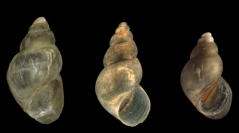

 European Journal of Taxonomy
2016 (208) - Pages 1-29 (EJT-208)
European Journal of Taxonomy
2016 (208) - Pages 1-29 (EJT-208)Phylogenetic analyses of the highly diverse (non-marine aquatic) gastropod family Hydrobiidae Stimpson, 1865 have revealed seven main lineages, most of which represent subfamilies. The subfamily Pseudamnicolinae Radoman, 1977, and specifically the genus Pseudamnicola Paulucci, 1878 (mainly inhabiting western and central Mediterranean regions), contributes substantially to this hydrobiid richness. Most of its congeners have been described in terms of their shell and penis features, which are of limited diagnostic value. Hence, the taxonomic status of some Pseudamnicola species needs to be revised, particularly of those inhabiting marginal regions, such as the Ponto-Caspian domain, largely occupied by the subfamily Pyrgulinae Brusina, 1882. Here we present a molecular phylogeny including species of both subfamilies along with extended morphological descriptions to confirm assignments of the Iranian species Pseudamnicola zagrosensis Glöer & Pešić, 2009; Sarkia kermanshahensis Glöer & Pešić, 2009 (originally within Pseudamnicola) and P. saboori Glöer & Pešić, 2009. Our COI-based tree rejects these assignments suggesting a new potential lineage, sister to the pyrgulinid species, and comprising three genera: Shadinia Akramowski, 1976, Intermaria gen. nov. and Persipyrgula gen. nov. These genera differ molecularly by 3.6%–8.5%, and are diagnosable by penis, female genitalia and radula features. Our findings evidence the high morphological variability of pyrgulinid species and provide insight into the origins and evolution of the freshwater Ponto-Caspian fauna.
Freshwater snails, Pseudamnicola, Cryptic taxa, Anatomy, mtDNA.